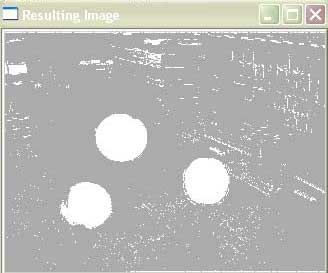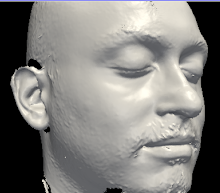Finally ... I have results
It was great to see my machine vision system function properly today, for the first time. The results were not disappointing as i had expected. I had invested two weeks of coding, and a week more for reading papers.
The system can detect foreground, and is able to "learn" whats in the background. The "learning" function is purely a statistic function, till now. I am using the Single Gaussian distribution. More details are on my project weblog.
Below, are some interesting images that i captured while my system was running. The colored image is what we see, and the black-white is what the system "sees". "Interpret" is probably a better word, its vision is no way near to human's, and hence not worthy of the "see" verb. Notice, how it has "almost" learnt and removed the background, and colored it ash.
What we see:

What the system has interpreted it as:

The system can detect foreground, and is able to "learn" whats in the background. The "learning" function is purely a statistic function, till now. I am using the Single Gaussian distribution. More details are on my project weblog.
Below, are some interesting images that i captured while my system was running. The colored image is what we see, and the black-white is what the system "sees". "Interpret" is probably a better word, its vision is no way near to human's, and hence not worthy of the "see" verb. Notice, how it has "almost" learnt and removed the background, and colored it ash.
What we see:

What the system has interpreted it as:


